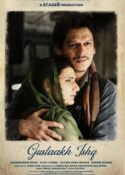 The magic of Madhubala is the magic of Hindi cinema. She epitomizes all the grace and feminine beauty that make those flickering images on the screen come alive as a collective emblem of the life force. And to think that she died so young. 36 is no age to die. Not for one of the most beautiful women God ever created….or maybe He needed to have her up there to beautify heaven.
The magic of Madhubala is the magic of Hindi cinema. She epitomizes all the grace and feminine beauty that make those flickering images on the screen come alive as a collective emblem of the life force. And to think that she died so young. 36 is no age to die. Not for one of the most beautiful women God ever created….or maybe He needed to have her up there to beautify heaven.
Madhubala is synonymous with beauty, just as Lata Mangeshkar is the epitome of melody.
The Nightingale Lataji recalled meeting Venus socially. “She was always warm and friendly. Though everyone stressed her breathtaking beauty, Madhubala never took her looks seriously.”
God knows, Madhubala turned Hindi cinema into an ambrosial paradise for as long as she remained alive. Short-lived as her stardom was, the reign at the top was swift and splendid.
Born in a conservative Muslim family, Madhubala started her career in 1942 at the age of 9 in Basant. Her first hit as a grownup leading lady was Kidar Sharma’s Neel Kamal, where both she and Raj Kapoor were introduced.
It was Kamal Amrohi’s Mahal in 1949 that gave Madhubala the image of an ethereal, unattainable, yet warm and gregarious beauty who could be a diva and she-devil at the same time. Lata Mangeshkar’s haunting melody, ‘Ayega aanewala,’ added immense allure to Madhubala’s screen persona. The actress and the singer remained associated throughout Madhubala’s life and career.
The song that announced the arrival of the singing phenomenon Lata Mangeshkar was filmed on Madhubala.
Lataji remembered every detail of the song: “I’ve forgotten most of my recordings. Even the songs that I’ve sung are mostly forgotten. But ‘Aayega aanewala’ is still fresh in my mind. The haunting tune was composed by Khemchand Prakash. I had a string of hit songs in 1949. But this song from Kamal Amrohi Saab’s Mahal was something else. Everyone was humming it. Everywhere I went, I heard the song. A lot of the credit for the impact of ‘Aayega aanewala’ went to Madhubala.”
Recalled Lataji, “She stipulated in her contracts that she wanted only me to do her playback singing. This was after the success of ‘Aayega aanewala’ in Mahal, though I had sung for her earlier….During those days we’d meet socially quite often. That kind of camaraderie no longer exists. Madhubala mujhe bahut pyar se milti thi. After Mahal I did notice a change in her. Me? I was too busy recording to notice changes in myself (laughs). But yes, 1949 was a decisive year for me. Every film I sang for was a super hit. There was no looking back after that…Later, Madhubala fell ill. But she continued to work. In fact, she performed some of my best songs in Mughal-e-Azam while she was terribly ill.”
Recounted Lataji, “Main aapko ek mazedaar baat bataaon(let tell you something funny)? The film’s record did not have my name on it. The singer’s name was given as ‘Kamini’, the character who lip-synced the song on screen in Mahal. Since the heroine, Madhubala played a ghost, I was literally the ghost voice in this song. It was the first of many songs that I sang for a ghost. The song became a rage. I had to sing it in every live concert.”
She recalls, “During those days, playback singers were called ‘ghost voices’ because we really were like ghosts… totally invisible to the public.”
From her repertoire of immortal melodies for Madhubala, Lataji handpicked her favourites. “I know ‘Aayega aanewala’ and ‘Pyar kiya toh darna kya’ are the favourites. But I prefer ‘Beqas pe karam kijiye’ and ‘Mohe panghat pe Nandlal’ in Mughal-e-Azam. And I had some beautiful songs to sing in Madhubala’s film Amar. One of my all-time favorite songs is from Amar: ‘Na milta gham toh barbaadi ke afsaane kahan jaatek. This was filmed not on Madhubala but Nimmi.”








